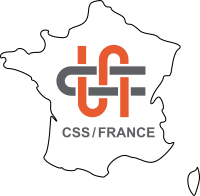Economics
Conference room
Chair: Jean-Pierre Nadal
A divide-and-conquer approach for B2B integral debt netting, Joannès Guichon, Sylvain Contassot-Vivier and Nazim Fatès
Trade credit in B2B systems, provided through deferred supplier payments, is essential for short-term financing but can create complex networks of unpaid invoices. When late payments accumulate, companies often become both creditors and debtors, resulting in a chain of interlinked obligations that heightens liquidity risks. Failure to collect credits on time can trigger a domino effect of non-payments, potentially leading to widespread financial stress or defaults across interconnected firms. Integral debt netting is a method to mitigate these risks. However, the underlying problem is NP-Complete, posing significant computational challenges for large, real-world graphs. Consequently, we apply a divide-and-conquer strategy onto our initial algorithm, significantly reducing computation time while maintaining result quality. This methodology offers a viable avenue for mitigating systemic financial risks in extensive B2B networks.
Complex systems under exogenous shocks: Bitcoin network structures and dynamics in crisis, Marco Venturini, Daniel García-Costa and Flaminio Squazzoni
Bitcoin, originally conceived as a decentralised, trustless system to challenge traditional financial apparatus, has increasingly exhibited structural properties akin to those of conventional financial markets, such as centralisation, concentration of power, and herd behavior. This study investigates whether Bitcoin adapts to exogenous shocks in a manner similar to financial markets and if so, whether these adaptations are reflected in the reconfiguration of its network structures.
We analyse Bitcoin’s structural dynamics by examining the temporal occurrence of network edges under varying market conditions, focusing on transactions patterns of repetition, reciprocation, and cyclic and transitive closures. Our analysis spans different time horizons, including market crises like the Mt. Gox collapse and the COVID-19 flash crash. Using network analysis and survival analysis, we employ Kaplan-Meier curves to assess the temporal dynamics within the Bitcoin transaction network.
Our findings indicate that Bitcoin network adapts to crises in ways that resemble the behavior of traditional financial markets under stress. By tracing the temporal dynamics of transactions and observing network reconfigurations, we investigate endogenous mechanisms that drive Bitcoin’s response to external shocks, challenging the notion that it operates fundamentally differently from conventional financial systems. Moreover, this study provides a novel perspective on the temporal dynamics of financial networks to avoid reducing network events to static representations and lays the groundwork for future, more causally-oriented analyses.
Dynamique de populations d’acheteurs dans des marchés de produits frais, Bastien Fernandez and Ali Ellouze
Bastien Fernandez and Ali Ellouze
Nous introduisons un modèle pour la dynamique de populations d’acheteurs dans des marchés de produits frais tel que le M.I.N. de Rungis, et nous présenterons les résultats de son étude mathématique. Les acheteurs sont mus à la fois par une loyauté envers leurs vendeurs habituels et par une recherche de meilleure opportunité. Les vendeurs, eux, modifient leurs prix selon les volumes de clientèle, de sorte à générer une rétroaction négative sur les acheteurs. Source d’instabilité, cette rétroaction favorise des comportements oscillatoires. Il s’agit donc de déterminer si ces oscillations perdurent indéfiniment ou si les volumes de populations se stabilisent asymptotiquement. Nous verrons en particulier que cette alternative dépend de l’inertie des acheteurs et de la sensibilité intrinsèque des vendeurs dans leur réaction
aux variations de clientèle.

